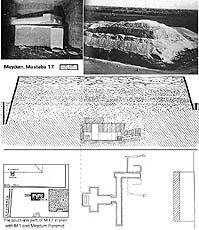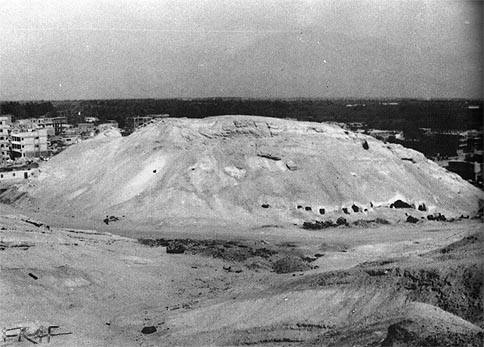|
|
|
|
HUNI / NISWTH / HU / HUI
The Papyrus Prisse (II, 7) names Huni as Snofru's predecessor [so the foundator of Dyn. IV would be, as generally reported, the son Huni had by Meresankh I, the one who married Hetepheres I, another daughter of Huni and future mother of Khufu].
The writing of the name Huni is found in the Turin Papyrus and Saqqara king list, while it is wanting in the Abydos king list.
 |
 |
The basic elements of this are the 3 inscriptions in which the writing variant is Niswth, while we can overlook the MK and later sources, the writing of which must be a corrupted one, deriving from later Egyptians own misinterpretation of the original variant of the name, the same as earlier egyptologist have done (Goedicke).
Hans Goedicke read the name as a nisbe Nj-Swteh (He who belongs to the one who seizes) referring the king to a god; the causative of the verb wtH or jtH (to draw, open) would be swtH (to seize); he related this name to the political program of Huni which would have been the king who finally estabilished the Egyptian dominion on the southern boundary at Elephantine.
The granite cone inscription was read by Goedicke as the foundation of the Elephantine fortress by this king (now we know that previous kings were active on the island, as the clay seals of Peribsen, Sanakht, Djoser, Sekhemkhet and Khaba show).
Later articles have rejected the reading of the name proposing Njswt Hwj (Barta), Hw-n.i nsw (Helck); Helck also pointed out that in Metjen inscriptions (see also below) do appear various other domains which had been read hwt Hn-sn and which could instead be read hwt Hwn (j-nsw). He proposed to read the name as 'The Defeater'. Goedicke's translation of the Sshd-Ah has been rejected in favour of 'The adhorned palace' or 'Palast: Stirnbinde der In.i-nsw-Hw'.
Thus if Huni, who has his name in a cartouche on contemporary inscriptions, has to be equated with the Nswt H(u) or Nysuteh just quoted, it is likely that the pyramid on the isle of Elephantine was of his reign (the cone might have been a pyramidon).
GENERAL CHARACTERISTICS OF THE 'SINKI' -like monuments (Little non-funerary Step Pyramids)
The absence of internal chambers prevents from attempting funerary hypotheses.
M. Lehner (The Complete Pyramids 1997 p.96) concludes in this way the page on the Provincial Step Pyramids: "These ... may have been symbols of living sovereignity, hinting that the step pyramid stood for more than the royal tomb, the marker of a dead king. It is interesting that Huni took the pyramid to the provinces just before people and produce would be brought from the provinces to the core of the Egyptian nation for building the largest pyramids of all time".
(W. Kaiser in K. Bard ed. Encyclopedia A.A.E. 1999 p. 283-9; W. Kaiser et al. in M.D.A.I.K. 53, 1997; see also the studies
in N. Swelim 'Some Problems...' (1983) p. 100 ff.; and A. Cwiek in G.M. 162 (1998) p.39-52).
I can add that Early Egyptian history had frequently shown us that those peoples and their kings not seldom showed to have learnt by their predecessors' mistakes: more than half a century of appearent failures in funerary complex construction, must have been a heavy influence to deal with for Huni; he could have thus preferred to express part of the symbolism and function the pyramid had, preferring to do this by a number of smaller monuments, easier to accomplish, than with one massive building; this would make Snofru the builder of 4 pyramids (Meydum, Seila, Dahshur North and South, as many scholars following Stadelmann's theory do currently believe) and it would imply a major and repentine organizative and logistic effort happened during Snofru's reign, who would have managed an higher volume of stone than his son Khufu (Cheops).
THE PYRAMID OF MEYDUM
The Meidum Pyramid was credited to Snofru by the New Kingdom graffitos calling it 'beautiful temple of Snfrw'.
(Once again note that THERE'S NO CONCRETE PROOF FOR THE ATTRIBUTION TO HUNI OF THE MEYDUM PYRAMID).


